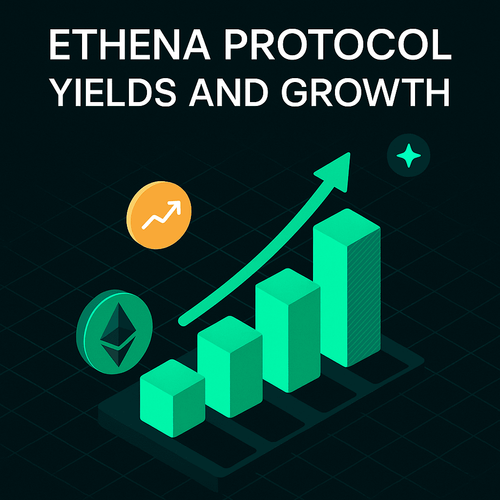Introduction
This article explores two protocols using delta-neutral strategies: Ethena, which has recently gained traction for its innovative stablecoin model, and Lumis, a stealth project offering a novel approach to liquidity provision and hedging. By examining their respective mechanisms, we assess how these protocols address challenges such as market volatility, liquidity risks, and efficiency in yield generation.
For those familiar with finance and trading, some of the underlying concepts might resonate with a cash-and-carry strategy, though adapted with additional layers of complexity unique to DeFi. The central question remains: how do these approaches compare regarding safety, scalability, and yield potential?
Lumis
Lumis introduces a non-custodial liquidity protocol that seamlessly integrates spot trading, derivatives, and lending markets. By employing an application-specific sequencer, it is set to offer high-yield, a delta-neutral stablecoin, and synthetic ETH vaults.
Challenges in Liquidity Provision
Providing liquidity on automated market makers (AMMs) like Uniswap presents challenges, particularly with impermanent loss (IL). Effective hedging requires rapid portfolio adjustments, ideally within the same transaction as the swap. While Uniswap V4's hooks enable pre- and post-transaction custom instructions, current derivatives decentralized exchanges (DEXs) often have delayed settlements. This delay hinders instant position updates and atomic composability, exposing positions to maximal extractable value (MEV) attacks.
Innovative Approach with App-Specific Sequencer
To address these issues, Lumis utilizes an App-Specific Sequencer (ASS), combining an L2 sequencer with Frequent Batch Auctions (FBA). Inspired by the CoW protocol, which aggregates trades to find coincidences of wants before settling at a unified price, Lumis extends this concept. It not only settles trades between users but also updates derivatives positions, achieving delta-neutral or synthetic ETH.
Core Components of Lumis Protocol
- Trading Engine
Designed for atomic composability and instant position updates between spot and derivatives markets, the trading engine employs app-specific sequencing to enhance trade execution efficiency and mitigate MEV attacks.
- Intent-Based Spot DEX (Uniswap V4): Utilizes pre- and post-hooks for advanced liquidity management, enabling optimized spot trading with customizable function calls.
- Inverse Perpetual Futures DEX:
- Facilitates efficient hedging and leveraged trading with profit and loss (PnL) and margin denominated in underlying assets like ETH or BTC.
- Market design is inspired by the Perennial Finance model.
- Contracts are settled in USD, with PnL calculated using specific formulas for long and short positions.
- Effective prices are determined by oracle prices and market skew impact.
- A funding rate mechanism aligns incentives between long and short positions, while the Trade Balancer optimizes transaction batching and routing to maintain market stability.
- App-Specific Sequencer (ASS)
Operating as a hybrid of an L2 sequencer and FBA, ASS synchronizes spot and derivatives markets for atomic transaction execution. By grouping transactions and executing them at a single price point, it reduces front-running opportunities and ensures fairer pricing, protecting users from MEV exploitation.
Process Flow:
- Users receive immediate confirmation for inclusion in the next batch.
- ASS updates the derivatives DEX oracle price to reflect the current index price, ensuring transactions execute around the true market price.
- Transactions are batched, seeking coincidences of wants to minimize price impact and balance long/short positions' open interest.
- The dispatcher executes all transactions simultaneously, ensuring atomic composability and instant position updates.
Delta-Neutral Stablecoin Vault
Lumis offers a delta-neutral stablecoin vault that provides liquidity providers with exposure to stable assets while mitigating market volatility risks. By balancing positions in spot and derivatives markets, the vault aims to maintain a neutral market stance, generating yields from trading fees and funding rates without significant directional exposure.
Synthetic ETH Vault
For those seeking exposure to ETH without holding the actual asset, the synthetic ETH vault offers a solution. By utilizing derivatives positions, it synthetically replicates ETH's price movements, allowing users to benefit from potential price appreciation or depreciation without direct ownership.
Ethena
Ethena's USDe is a step forward in the stablecoin ecosystem, aiming to combine the principles of decentralization with financial innovation. Built on Ethereum, USDe functions as a synthetic dollar designed to maintain a stable value while offering high yields to its users. By leveraging delta-hedging strategies with assets like Ethereum (ETH) and Bitcoin (BTC), the protocol positions itself as a potential alternative to traditional stablecoins, blending yield generation with a focus on resilience.
Understanding USDe: Core Components
At the heart of USDe lies its collateral-backed structure. Users can mint USDe by depositing stablecoins such as USDC or DAI. These funds are then used to buy ETH or BTC in the spot market, forming the base of a delta-neutral strategy. For every spot purchase, an equivalent short position is opened in perpetual futures contracts. This hedging mechanism eliminates exposure to price fluctuations in the underlying assets, ensuring the value of USDe remains approximately $1.
To bolster its stability and manage potential risks, Ethena employs a Reserve Fund designed to act as a financial backstop during periods of market stress. This fund accumulates capital primarily through fees collected from the protocol's operations, such as trading fees, borrowing interest, and liquidation proceeds. These assets are held in highly liquid and stable forms, including major stablecoins, ensuring immediate availability when needed.
The Reserve Fund is engineered to address a variety of contingencies. It steps in to absorb losses arising from adverse funding rate movements, collateral devaluation, or unforeseen liquidation shortfalls. By providing this buffer, the Reserve Fund plays a pivotal role in maintaining the integrity of the protocol and protecting its users. This mechanism not only safeguards individual participants from systemic disruptions but also underpins the protocol's ability to sustain its peg and operational reliability, even during extreme market conditions.
For those seeking to earn yields, Ethena offers the opportunity to stake USDe, converting it into sUSDe. This staked version accrues rewards from multiple sources, making it an attractive option for yield-oriented participants. The yields themselves are derived primarily from two streams: staking rewards from Ethereum’s network and funding rate income from perpetual futures. ETH staking rewards provide a steady source of income, while positive funding rates on short futures positions generate additional earnings. Together, these mechanisms create a consistent, though market-dependent, flow of rewards.
Navigating Challenges
Despite its innovative structure, USDe faces notable challenges. One key concern lies in the volatility of funding rates. While positive funding rates contribute to yields, prolonged periods of negative rates can erode returns, potentially affecting user confidence. Similarly, liquidity risks can arise during large-scale redemptions or market dislocations, leading to slippage or delays. These issues are compounded by collateral risks, particularly with assets like stETH, whose value may fluctuate or experience depegging during market turmoil.
How Ethena Mitigates Risks
Ethena has developed a comprehensive risk management framework to address these challenges, with the Reserve Fund playing a pivotal role. In times of extreme market stress or unforeseen losses, the Reserve Fund steps in to cover liabilities, ensuring that user funds remain protected. This safety net not only provides confidence to participants but also underpins the stability of the entire system.
The protocol further combats risks through dynamic hedging, continuously adjusting short and spot positions to maintain delta-neutrality. This minimizes exposure to price volatility in the underlying assets. Additionally, Ethena proactively monitors funding rates and adapts its strategies to reduce the impact of sustained negative rates. Diversification in collateral assets, such as accepting both USDC and DAI, also mitigates the risk of reliance on a single asset. It is important to note that a certain level must be maintained of the reserve fund for it to continue acting as cushion.
Conclusion
Lumis and Ethena represent two distinct yet similar approaches to generating delta-neutral returns in decentralized finance. While both protocols aim to mitigate market volatility and enhance yield opportunities, they achieve these goals through different mechanisms and risk frameworks.
Lumis employs an application-specific sequencer to synchronize spot and derivatives markets, enabling atomic transaction execution and minimizing risks such as impermanent loss and MEV exploitation. Its focus on seamless integration between spot trading, derivatives, and lending markets allows for advanced liquidity management and hedging, supported by unique features like its delta-neutral stablecoin and synthetic ETH vaults. However, its reliance on app-specific infrastructure introduces dependencies on execution precision and adoption within its niche ecosystem.
Ethena, by contrast, leverages delta-hedging strategies to maintain the stability of its synthetic stablecoin, USDe, while generating yields from staking and funding rates. With a strong emphasis on risk management through a Reserve Fund, Ethena offers a robust framework for resilience against market stress. However, challenges such as funding rate volatility, liquidity risks, and dependence on perpetual futures markets present operational complexities.
Ultimately, while both protocols create stablecoins, they primarily function as tokenized representations of their respective strategies. The xUSD and USDe tokens are designed more for yield generation than for transactional purposes.




